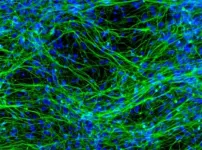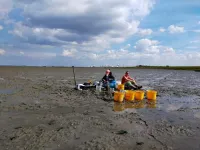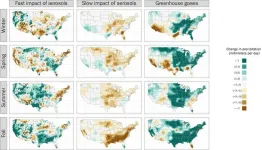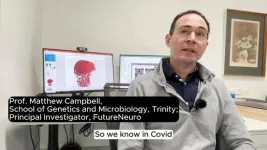MD Anderson acquires inducible switch technologies for cell therapy
Asset purchase allows MD Anderson to incorporate CaspaCIDe® and GoCAR ® technologies into its cell therapy programs, out-license technology to interested parties
2024-02-22
(Press-News.org) HOUSTON ― The University of Texas MD Anderson Cancer Center today announced it has acquired certain assets from Bellicum Pharmaceuticals, Inc. related to the CaspaCIDe® switch platform and the GoCAR® platform. The transaction also includes clinical-grade stocks of rimiducid, an agent used to trigger the switches.
As a result of this acquisition, MD Anderson may incorporate these platforms into its own cell therapy programs. The institution also intends to make the technology widely available via non-exclusive licenses to other academic institutions and to biopharmaceutical companies.
MD Anderson plans to focus on using the CaspaCIDe technology as a safety feature of cell therapies in development. The safety switch incorporates an inducible enzyme known as caspase-9, which initiates the first step of the apoptosis programmed cell death pathway. The switch can be triggered by rimiducid, leading to rapid elimination of cells containing the CaspaCIDe switch. MD Anderson’s Therapeutics Discovery division also plans to continue the clinical development of rimiducid in order to seek future approval from the Food and Drug Administration.
“We strive each day to advance new, innovative treatment options to improve the lives of our patients, and cell therapies hold tremendous promise as effective immunotherapies,” said Philip Jones, Ph.D., vice president of Research Strategy, Transformation and Operations at MD Anderson. “CaspaCIDe provides a critical safety mechanism which could be triggered as required to reduce side effects, and we look forward to its continued development at MD Anderson.”
Including this safety switch in cell therapies may offer clinicians the ability to quickly limit potential treatment-related toxicities that may occur. Potential applications include cell therapies where cytokine release syndrome and neurotoxicities have been observed, cell therapies targeting novel antigens with on-target/off-tumor safety concerns, and next-generation cell therapy constructs with higher potency.
“When designing novel cell therapies, we must always ensure patient safety remains a top priority. We have explored a variety of associated technologies, and case studies demonstrate that the CaspaCIDe technology is effective in rapidly eliminating the transduced cells,” said Katy Rezvani, M.D., Ph.D., professor of Stem Cell Transplantation and Cellular Therapy. “We have incorporated CaspaCIDe into many of our own cell therapies under investigation, and we are excited about the prospect of broadening the potential applications of this technology in the future.”
Under a previous licensing agreement, MD Anderson has incorporated CaspaCIDe into multiple cellular therapy programs, including certain chimeric antigen receptor (CAR) natural killer (NK) cell therapies and plans for certain CAR T cell therapies. The current acquisition includes the previous licenses by MD Anderson and eliminates certain downstream financial obligations required under those licenses.
The asset acquisition also includes the transfer of certain intellectual property related to Bellicum’s GoCAR-T™ and GoCAR-NK™ technologies. Using the rimiducid-based switch system, GoCAR cell therapies feature an inducible MyD88/CD40 (iMC) activation switch designed to enhance proliferation and functional persistence of adoptive cell therapies by resisting exhaustion and by driving production of immunomodulatory cytokines to overcome inhibitory signals from the tumor microenvironment. GoCAR cell therapies may be particularly well-suited for use in solid tumors given their immune suppressive tumor microenvironment.
Read this press release in the MD Anderson Newsroom.
- 30 -
END
ELSE PRESS RELEASES FROM THIS DATE:
2024-02-22
From Bangladesh to India to Texas, Tom Varner is leveraging his research to improve sources for drinking water around the world.
Varner, a UTSA doctoral student in environmental science and engineering, explored the mobility of arsenic from the sediments surrounding the Meghna River in Bangladesh as part of a National Science Foundation-funded project.
The river flows through central Bangladesh, where elevated concentrations of arsenic in the groundwater threaten the welfare of millions of people. Long-term exposure to arsenic, which is toxic when ingested, can lead ...
2024-02-22
A large-scale clinical trial of treatment strategies for Crohn’s disease has shown that offering early advanced therapy to all patients straight after diagnosis can drastically improve outcomes, including by reducing the number of people requiring urgent abdominal surgery for treatment of their disease by ten-fold.
The PROFILE trial, led by researchers at the University of Cambridge, involved 386 patients with newly-diagnosed active Crohn’s disease. Recruiting from 40 hospitals across the UK, and supported by the National Institute for Health and Care Research (NIHR) Clinical Research Network, it sought to test whether a biomarker – a genetic signature ...
2024-02-22
Anxiety-related disorders can have a profound impact on the mental health and quality of life of affected individuals. Understanding the neural circuits and molecular mechanisms that trigger anxiety can aid in the development of effective targeted pharmacological treatments. Delta opioid receptors (DOP), which localize in the regions of the brain associated with emotional regulation, play a key role in the development of anxiety. Several studies have demonstrated the therapeutic effects of DOP agonists (synthetic compounds which selectively bind to DOPs and mimic the effect of ...
2024-02-22
If storms become stronger in the future due to climate change, more nitrogen may be released from the bottom of coastal seas. This is shown by research of marine biogeochemist Dunia Rios-Yunes at NIOZ in Yerseke. Rios-Yunes will defend her PhD-thesis today at the University of Utrecht. “The dynamics of nutrients in deltas and estuaries have been a bit of a blind spot for marine science, so far”, she says.
Inflatable couch
For her experiments, Rios-Yunes spent many hours on an inflatable couch on ...
2024-02-22
MINNEAPOLIS / ST. PAUL (02/19/2024)—For the first time, researchers at the University of Minnesota Twin Cities (UMN) and the University of Illinois Urbana-Champaign (UIUC) have demonstrated that it is possible to provide accurate, high-resolution predictions of carbon cycles in agroecosystems, which could help mitigate the impacts of climate change.
The study by scholars from the UMN-led National Artificial Intelligence Institute for Climate-Land Interactions, Mitigation, Adaptation, Tradeoffs and Economy (AI-CLIMATE) and UIUC-led Agroecosystem Sustainability ...
2024-02-22
We know that greenhouse gas emissions like carbon dioxide should increase rainfall. The emissions heat the atmosphere, causing a one-two punch: warmer oceans make it easier for water to evaporate, and warmer air can hold more water vapor, meaning more moisture is available to fall as rain. But for much of the 20th century, that increase in precipitation didn’t clearly show up in the data.
A new study led by researchers at the Department of Energy’s Lawrence Berkeley National Laboratory (Berkeley ...
2024-02-22
Our cells are surrounded by a fragile membrane that’s only 5 nanometers thick, 1/20 of a soap bubble. Cells are easily damaged by physiological activities, including muscle contraction and tissue injury. To cope with such damage, cells are equipped with mechanisms that can repair membrane damage to a certain degree.
Mechanical damage to the cell membrane was previously believed to trigger two simple cellular outcomes: recovery or death. In this study, however, the researchers uncovered a third outcome – cellular senescence.
“When I started this project, I simply aimed to understand ...
2024-02-22
Australia can lay claim to two new species of native rodent thanks to a study from The Australian National University (ANU).
The aptly named delicate mouse was previously thought to be a single species spanning a massive stretch of the country from the Pilbara in Western Australia, across parts of the Northern Territory and through Queensland down to the New South Wales border.
But researchers at ANU and CSIRO thought there might be more to the story.
Lead author Dr Emily Roycroft, from ANU, said we now know there ...
2024-02-22
Statement Highlights:
A new American Heart Association scientific statement updates more than a decade of research identifying, managing and preventing neurodevelopmental delays and disorders among people with congenital heart disease.
The new statement outlines important changes since the Association’s last statement in 2012, such as revised criteria to determine which children and adults are at high risk for neurological developmental delays and disorders, as well as an updated list of factors that may increase the risk.
Critical next ...
2024-02-22
Today, a team of scientists from Trinity College Dublin and investigators from FutureNeuro announced a major discovery that has profound importance for our understanding of brain fog and cognitive decline seen in some patients with Long COVID.
In the months after the emergence of the novel coronavirus SARS-CoV2 in late 2019 a patient-reported syndrome termed Long-COVID began to come to the fore as an enduring manifestation of acute infection.
Long COVID has up to 200 reported symptoms to date, but in general patients report lingering symptoms such as fatigue, ...
LAST 30 PRESS RELEASES:
[Press-News.org] MD Anderson acquires inducible switch technologies for cell therapy
Asset purchase allows MD Anderson to incorporate CaspaCIDe® and GoCAR ® technologies into its cell therapy programs, out-license technology to interested parties






